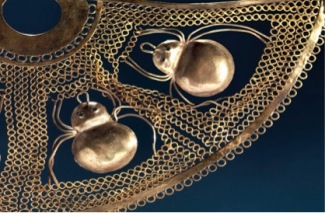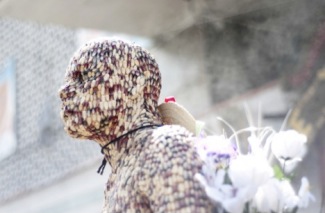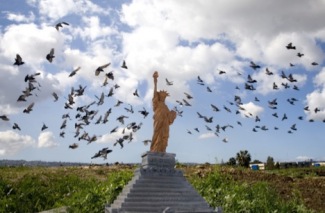Food for the Soul: Pacific Standard Time LA/LA
“In a way that is possible only in Los Angeles, Pacific Standard Time: LA/LA will implicitly raise complex and provocative issues about present-day relations throughout the Americas and the rapidly changing social and cultural fabric of Southern California.” From LA/LA event’s site
Check It Out!
By Nina Heyn, Your Culture Scout
Living in Los Angeles means that you conserve water or you will get a nasty note from your local water and power company, you allow 45 minutes to an hour to drive 10 miles across the city (and very often end up taking twice the time), you pay $900,000 for a two-bedroom shack, and you do not get out of bed for an earthquake less than 5.0. In terms of culture, Los Angeles has plenty of film premieres with the ultimate show of the Academy Awards leading the pack, plenty of concerts and lots of small exhibitions in various pocket neighborhoods of the 60 square miles that comprise the city with its suburbs and incorporated communities within. What Los Angeles often lacks, is major loan exhibitions, on a scale of retrospectives in London or Paris where you would see a mile-long line to visit an Alexander McQueen show at the V&A Museum or a collection of Leonardo paintings. That kind of high culture stops in New York and rarely hits the West Coast.
 The Metropolitan Museum of Art for Julie Jones’s 82nd and 5th episode. © 2013 MMA, photographed by Kathy Dahab. Nose Ornament with Spiders
The Metropolitan Museum of Art for Julie Jones’s 82nd and 5th episode. © 2013 MMA, photographed by Kathy Dahab. Nose Ornament with Spiders
Date: 1st century BCE – 2nd century CE Geography: Peru
However, there is an amazing cultural, political and social art initiative currently ongoing in Los Angeles and it rivals many grand retrospectives of European capitals. This being Los Angeles, the “Pacific Standard Time: LA/LA” art presentation is not limited to one location but it involves 70 arts and cultural institutions across Southern California, mainly in Los Angeles, but also including cities as far as San Diego and Santa Barbara. The goal is to present, explore and discover Latin American and Latino art, especially as it pertains to the South and Central American neighbor of Southern California. The “LA/LA” event is running from Sept. 2017 through January 2018 so chances are you may have an opportunity to visit some of its exhibitions.
The event is led by The Getty Center and one of the keystones of “LA/LA” is their own major loan exhibition “Golden Kingdoms: Luxury and Legacy in the Ancient Americas” that features 300 gold, stone, shell and even feather masterpieces from Central and South America. The exhibition is scheduled to resurface at the Met in New York in February. A lot of artifacts have been unearthed fairly recently and since they have been assembled from national collections of Peru, Colombia, Mexico and other countries, it is indeed a rare opportunity to experience such a variety and mastery of pre-Colombian art. Most of the displayed artworks – ornaments and luxury products (vessels, figurines, votives) – are made of gold, that beautifully malleable and non-corrosive metal that is so suited to refined art creations. Since many of these treasures have been created a thousand years before the Contact, their sophistication and artistry are a rare testament to cultures destroyed by the invaders. They are also utterly beautiful and captivating. If this is what the Cortez and company found on arrival in the New World, no wonder they did not want to leave. It also points to precariousness of civilizations which come and go, no matter how advanced and refined. There are always barbarians at the gate.
The cultural importance of the “LA/LA” event lies however not just in this single, high-profile exhibit but in a sheer number and the variety of exhibitions throughout the region. Since the Spanish-speaking population in the metro area of L.A.- Long Beach – Anaheim reaches close to 6 million people and it constitutes about 45% of the population in Los Angeles, it is a long overdue consideration of the influences the Latino art, a way of living and these cultural traditions have on the region. To demonstrate the scope of the “LA/LA,” here is a sampling of those 70 different events that will roll out over the next four months.
 Alfadir- Luna_Procesion
Alfadir- Luna_Procesion
Annenberg Space for Photography has opened an exhibition “Photography of Cuba,” that documents complexities of recent Cuban history and politics. Skirball Cultural Center will start in October a photography exhibit “Surfaces Tension by Ken Gonzales-Day: Murals, Signs and Mark-Making in L.A.” that examines street art and graffiti as it reflects diversities and art. Film buffs can catch at UCLA Film and Television Archive an exhibition of materials on the Latin American cinema between 1930-1960, documenting films from Cuba, Argentina and Mexico that have been screening in Latino neighborhoods of Southern California. Los Angeles County Museum of Art is mounting five different exhibitions on the theme: ranging from traditional: “Painted in Mexico, 1700-1790”, through informative: “Found in Translation; design in California and Mexico, 1915-1985”, to a forward thinking: “A Universal History of Infamy” featuring new works from avant garde artists.
Some of the exhibitions are meant to stretch the limits of what typically draws attention of museum curators in terms of geography and history. Examples would include “Circles and Circuits: History and art of the Chinese Caribbean Diaspora” at the California American African Museum and “Axe Bahia: the power of Art in Afro-Brazilian Metropolis.”
 James Peck – Omar Pimienta -LadyLibertad
James Peck – Omar Pimienta -LadyLibertad
Last but not least, in the current political climate of icy winds blowing from Washington towards millions of Latino immigrants, mainly located in California, this event is a powerful reminder of what immense contribution has been made by Latin American peoples throughout centuries to the world art.
There are exhibitions and cultural events that speak to the subject in many ways. Hammer Museum is presenting “Radical Women: Latin American Art, 1960-1985” featuring contributions from more than 100 female artists from 15 Latin countries. Craft and Folk Art Museum brings in a display “The US-Mexico Border: Place, Imagination and Possibility.” Oceanside Museum of Art presents local artists from both side of the border as they explore political and social issues in a show called “UnDocumenta.”
The list of events is long and the best way to access them is through pacificstandardtime.org.
The slogan for the entire event is “There will be art” – a paraphrase on the Oscar-nominated movie title There Will Be Blood. Art is so much more fun than blood.
